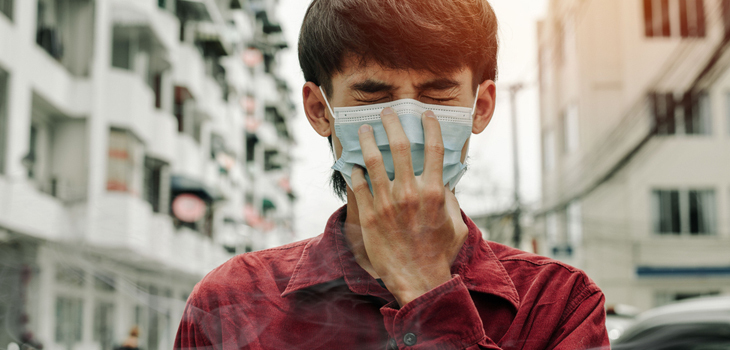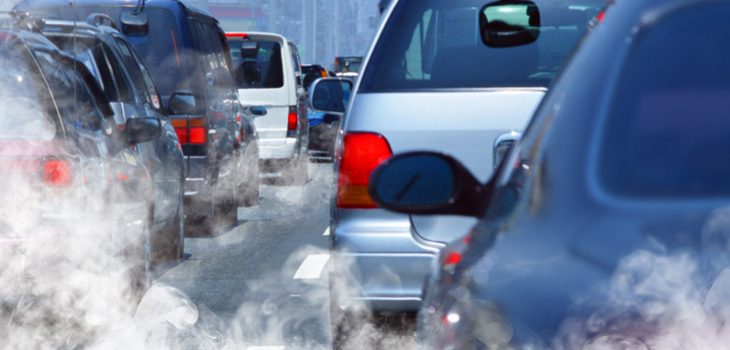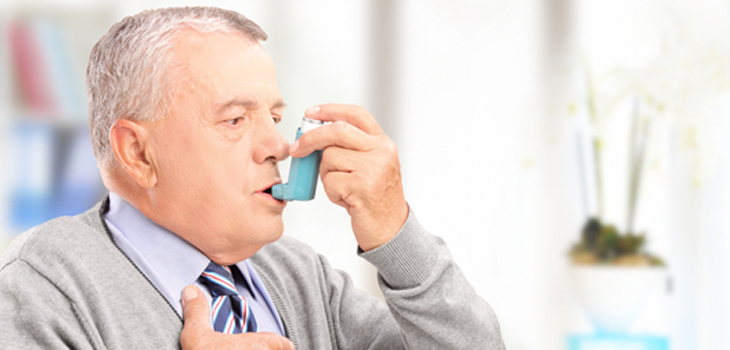
We bring air pollutants deep into our lungs when we breathe in contaminated air, so it’s no surprise that toxic air causes severe respiratory damage. As a result of pollution, new cases of asthma are diagnosed every day; it can exasperate-existing respiratory problems and even contributes to the emergence or progression of chronic respiratory diseases, emphysema, and even lung cancer. Air pollutants also have a significant negative impact on lung development, increasing the risk of developing lung diseases later in life.
Pollutants in the air affect your lungs depending on their type, mix, and concentration as well as how much enters your lungs. Air pollution affects respiratory health in both acute and chronic ways, affecting a variety of different systems of the body. As you are exposed to high levels of pollution, for example on a busy road or during peak traffic, you may notice onset symptoms soon after. These symptoms include exasperated airways, shortness of breath, and wheezing. If you notice that these symptoms appear regularly, you should see your doctor for a check-up.

Air pollution can travel hundreds of miles and affect areas away from its source. It is even plausible that levels of pollution in India will be influenced by sources well outside the country. Particulate matter such as ozone, nitrogen dioxide, sulfur dioxide, and carbon monoxide are the contaminants with the most evidence of harming lung health. Particulate matter is being used as an indicator of air pollution and is typically categorized according to particle sizes, such as Coarse Particulate Matter, which has an aerodynamic diameter between 10 μm and 2.5 μm, and Fine Particulate Matter, which has an aerodynamic diameter less than 2.5 μm and can penetrate deep into the lung.
The main source of air pollution in towns and cities in India is vehicular pollution. Pollutants such as nitrogen dioxide and particulate matter are produced by vehicles that run on fossil fuels. Most diesel vehicles emit more of these pollutants than gasoline vehicles. Particulate matter is also produced by the friction of brakes and tires on the road. Smoke, such as tobacco smoking, burning natural gas in houses for heating or preparing food, emissions from energy production plants, industry, and even agriculture are some of the other sources of air pollution. Events involving bonfires and fireworks, such as Holi, Bhogi, and Diwali, can cause temporary increases in pollution. Some individuals are subjected to air pollution as a result of their occupations. Fumes and particles are also generated during cooking, heating, lighting, and incense. Natural sources of air pollution are also possible. High pollution levels in India can sometimes be caused by dust blown from the Thar desert. These dust episodes can be dangerous for people who have lung conditions. Pollen, volcanoes, hurricanes, and sandstorms are some of the other natural sources of air pollution.
All types of air pollution can affect the breathing passages at high levels, and related respiratory effects have been observed with prolonged exposure to lower pollution levels. Nose and throat symptoms are among the most common upper respiratory symptoms reported as a result of pollution exposure.
Symptoms include a runny nose, sneezing, non-allergic rhinitis, sinusitis, nasal mucosal erythema, nasal itching, dry mouth and throat, productive cough, nasal congestion, and dry cough, wheezing, and dyspnoea. After exposure to elevated levels of sulfur dioxide and nitrogen oxides, symptoms such as nose and throat irritation, followed by bronchoconstriction and dyspnoea, have been reported, particularly in asthmatic individuals. Cough and dry cough, sneezing, and runny or stuffed nose have all been linked to early-life exposure to particulate matter and nitrogen dioxide. If particles enter the epithelium of the lungs, they can cause inflammation and worsen pre-existing lung diseases like asthma and chronic obstructive pulmonary disease. Lung cancer, which is one of the leading causes of death in India, is frequently linked to tobacco use, which is a type of particulate matter contamination. Despite this, there are numerous other risk factors for the development of lung cancer, such as air pollution, particle pollution, and ozone, all of which play a significant role in lung cancer mortality. It is important to note that symptoms are not a reliable indicator of whether or not air pollution is a health risk. There may also be no direct symptoms at high concentrations of exposure.
Everyone is affected by air quality; however, some individuals are more vulnerable than many others. Children are especially vulnerable to airborne pollutants since their innate immunity and anti-oxidant defense systems are all still developing, and that they have a faster respiratory rate, they take in more air per unit body weight than adults, leading to a higher dosage of air pollutants inhalation when compared to adults. They also spend a lot more time outside, where they are exposed to pollutants. Even among healthy people, a few are extremely sensitive to the effects of air pollution. Even if they do not have any of the risk factors listed above, they may experience adverse effects at lower levels of air pollution than the average person. This increased sensitivity could have a genetic basis. Furthermore, older people are at severe risk of mortality due to aging-related lung function decline combined with the existence of cardiovascular and co-morbid pulmonary conditions.

What precautions can you take to keep yourself safe from air pollution? To start with, you can reduce your pollution exposure by avoiding congested areas and major roads as much as possible when pollution levels are high. This is especially critical if you have a lung condition or have children. You shouldn’t be afraid to go outside on days when pollution levels have decreased. During such days, children should not be barred from attending school or participating in sports. Even so, it’s a good idea to avoid spending extended periods of time in polluted areas, such as busy roads – especially if you have a lung condition.
Individuals with respiratory disorders are more likely to become ill and require treatment as air pollution levels rise. If you or your kid has a long-term lung condition, it is advisable to take the following precautions on high-pollution days:
- Strenuous outdoor exercise should be limited or avoided. Exercise can help if you have a lung condition but keep it indoors in a well-ventilated room or fitness center
- Avoid areas with high pollution levels, such as major roads and congested
- Try to arrive at work a little earlier, before peak traffic, when pollution levels begin to
- Use side streets away from traffic if you cycle, walk, or run as part of your journey to
- Walk on the inside of the sidewalk, the further you are from traffic, the less pollution you will be exposed
- If you have asthma and use an inhaler on a regular basis, keep it with you at all
Furthermore, if you need an asthma plan or experience difficulty breathing often
you can reach us out at Dr. Mehta’s Hospitals.
